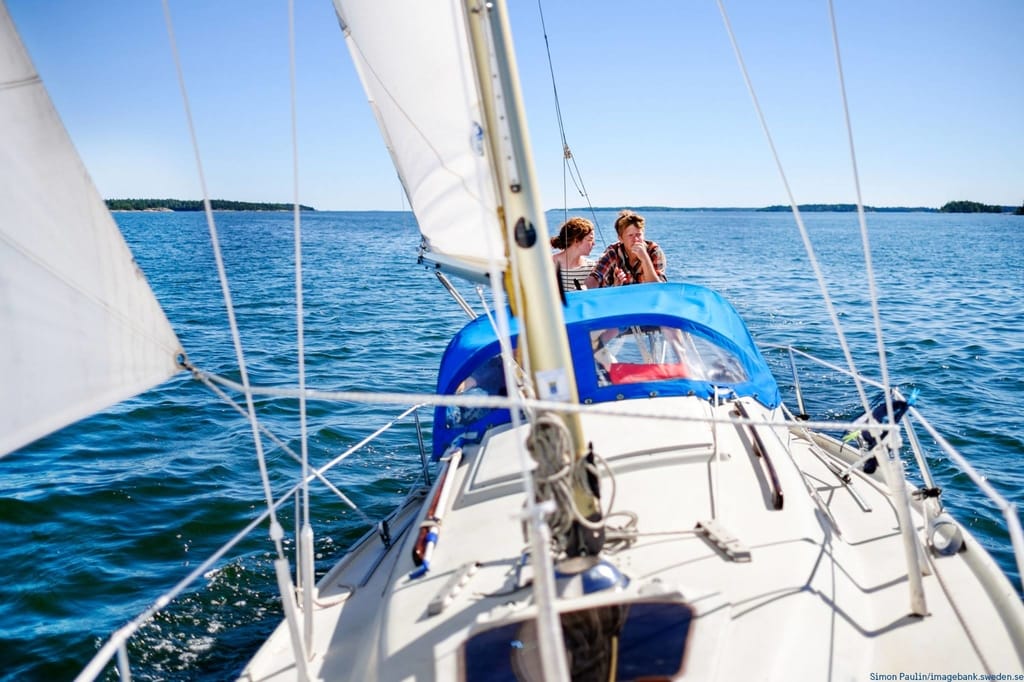Sailing Pre-Departure Checklist
Before you go sailing, whether it is for a short trip or a long offshore sailing passage, the skipper and crew should check that the boat is ready for sea. They need to go through this sailing checklist and ensure that all the boat’s equipment is in place and working properly and that all the crew understands its use. It is crucial that the safety gear is fully functional and that the crew know when and how to use it. Remember to inform someone ashore of your itinerary.
Make sure you have all the basic equipment on board that you need for the trip and check that it is in working order before you set sail. Take the time needed to do a visual check of all systems.
Supplies Checklist
- Water: Check water tank levels and keep then written down on a logbook
- Breakfast Foods: High carb, low glycemic index. Oat or wheat-based cereals, milk, or fruit juice is the ideal sailing breakfast.
- Lunch: Make this the main meal on passage — protein (approx 50g equivalent per person per day), vegetables, starch/complex carbs (bread, potatoes, pasta, biscuits, etc.).
- Dinner: High protein, low carb, low sugar. Tinned fish, sprouts, crispbreads, 2-minute noodles (for cold evenings), eggs, cheese.
- Beverages: Tea/coffee/sugar.
- Snacks: Chocolate & sweet snacks for night watches, dried fruit, nuts, crackers/biscuits, etc.

Engine Checklist
- Check the fuel and oil levels, water systems, and the tightness of drive belts, seawater intake, impeller, and filters.
- Turn on the engine to warm it up before you sail off. Also, check that the cool water intake is being unloaded.
- Check the propeller shaft’s stern gland and greaser if fitted.
- Check that the batteries are fully charged.
- Be sure that a suitable toolkit is on board, with sufficient engine spares and other equipment.
Boat Equipment Checklist
- Check the condition of the anchor and the anchor chain. Know how much is available. Check that the end of the chain is secured onboard to a strong point that is easily accessible.
- Know your bilges—is she a dry or wet boat? Make sure that you know what level of water is normal in your bilge.
- Check gas bottle fittings and piping. Also make sure the gas alarm is working.
- Operate all seacocks. Ensure you have bungs of the correct size available.
- Make sure that a waterproof flashlight with spare batteries and bulbs is onboard.
- Check that your navigation lights and VHF radio are in working order.
- Close all hatches and ventilators that may let in water.
Safety Equipment Checklist
- Check that your first-aid kit is complete and up to date—brief the crew on its location and composition.
- Check that you have enough safety harnesses and that all life jackets are working properly for all of the crew.
- Confirm that the life raft has been serviced recently and that its lashings are secure.
- Ensure that there are sufficient usable flares and a foghorn on board.
- Check that the fire extinguishers are serviceable and in date.
>>Also Read: Must-Have Boat Safety Equipment For Sailing

Rig and Sails Checklist
- Check masts and spars—look for broken strands in standing rigging, cracks in fittings, loose pins or joints, damage, and metal fatigue.
- Check running rigging for fraying and chafing.
- Inspect sails: seams, stress points, cringles, strengthening patches, battens, and earlier repairs.
Navigation Equipment Checklist
- Be sure to have an up-to-date chart onboard for your sailing area.
- Have local tide tables, tidal atlas, and local sailing instructions on board.
- Check that all the navigation instruments are in working order.
General Checklist
- Check there are sufficient provisions and water on board, with enough to allow for an unexpectedly long trip.
- Make sure your deck hardware is working.
- Check all hatch seals for potential leaks.
- Complete all necessary repair jobs.
- Sunscreen (At least SPF 30+)
- Extra Clothing
- Binoculars
- Gloves
- Generator
- For colder climates: Sleeping bag, Waterproof blanket
- Sailing Jacket
Before Setting Sail
- The Plan: If you are the skipper, allow time to brief the crew on the plan for the passage.
- New Crew: Give a tour of all the key equipment to any crew who are new to the boat so that they understand its use.
- Safety: Explain to the crew the safety equipment that is carried on board, its location, and when it is to be used.
- Navigation: Prepare a passage plan, noting details of weather, tides, and other key information.
- Clothing: Make sure that all crew onboard are equipped with the right clothing and personal safety gear.
- Notify: Let a responsible person ashore know what your plans are, and the time you expect to return or reach your destination.
